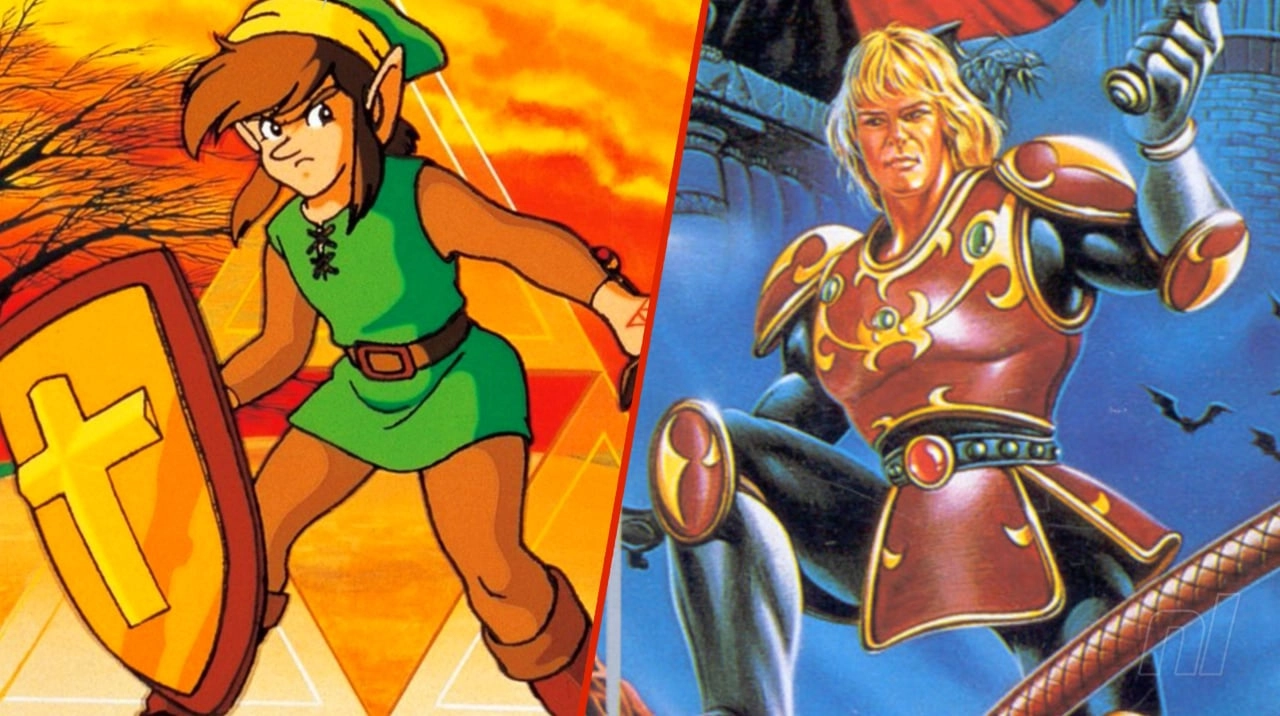
This month brings a trip down memory lane for nostalgic gamers as we mark the 35th anniversary of two classic video games – Zelda II: The Adventure of Link and Castlevania II: Simon's Quest. Released in North America on December 1, 1988, these two titles continue to stir up conversations among the gaming community, even more than three decades after their debut.
Zelda II: The Adventure of Link, which is the direct sequel to the original The Legend of Zelda, was welcomed with positive feedback when it first came out. It was unique for its time, offering a vast overworld to explore, which was similar to its predecessor. Nonetheless, Zelda II distinguished itself by incorporating a side-scrolling perspective during enemy encounters. This feature, in particular, stands out as unconventional for a Zelda game and has since led to mixed reviews from players revisiting the title in contemporary times.
The game transmitted an adventurous spirit, inviting players to traverse a variety of environments and tackle challenges in ways that further expanded the definition of action RPGs. Despite its departure from the first Zelda's top-down perspective, this sequel helped solidify the franchise's place in the gaming world by toying with new combat mechanics and exploring different narrative pathways.
While Zelda II: The Adventure of Link was a daring stride for Nintendo, Castlevania II: Simon's Quest, which we believe may have also released on the same day, was equally audacious. The second installment in the Castlevania series initially made its appearance in North America within the same month and year, though an exact release date remains unconfirmed. However, it was acknowledged to have been launched slightly over a year after its presentation on Japan's Famicom Disk System.
Similar to Zelda II, the reception of Castlevania II has been split among fans. The game introduced several mechanics that have since become characteristic of the series, including the notorious day-night cycles and an emphasis on backtracking through previously explored areas, causing some player frustration. Nevertheless, many of these elements laid the groundwork for future titles, such as Castlevania: Symphony of the Night, which have come to be revered within the franchise.
Castlevania II's divergence from its linear predecessor in favor of a more explorative and less structured approach signified a significant moment in the evolution of the Castlevania games. Its bold experimentations with platforming and RPG elements were instrumental in the development of what fans would come to celebrate as the 'Metroidvania' subgenre.
Neither Zelda II nor Castlevania II receive the same level of universal acclaim that later entries in their respective series would enjoy, but they certainly possess an undeniable influence on the gaming landscape. These games are pivotal milestones that contributed to the shaping of game design and genre blending that players enjoy today.
For gamers eager to relive these classic adventures or experience them for the first time, both titles are accessible to modern audiences. Zelda II: The Adventure of Link is available on the Nintendo Switch Online service, offering players a convenient way to explore its unique charm. Similarly, Castlevania II: Simon's Quest can be found within the Castlevania Anniversary Collection, inviting vampires hunters to give it a whirl.
Although they have aged, and their experimental nature has led to a split in opinion among gamers, there is no disputing the impact that both Zelda II and Castlevania II have had on video games as we know them. Their historical significance and the fond memories they've created for many players are worth celebrating. These games challenged the norms of their time and dared to envision a different kind of gaming experience—a trait that would inspire countless developers and titles in the years that followed.
Reflecting on their 35th anniversary, one cannot help but appreciate how Zelda II and Castlevania II helped pioneer elements that have become cornerstones in game design. These classics remind us that the bold choices and creative risks taken by game developers decades ago are what continue to drive innovation and storytelling in the games we love today.
You must be logged in to post a comment!